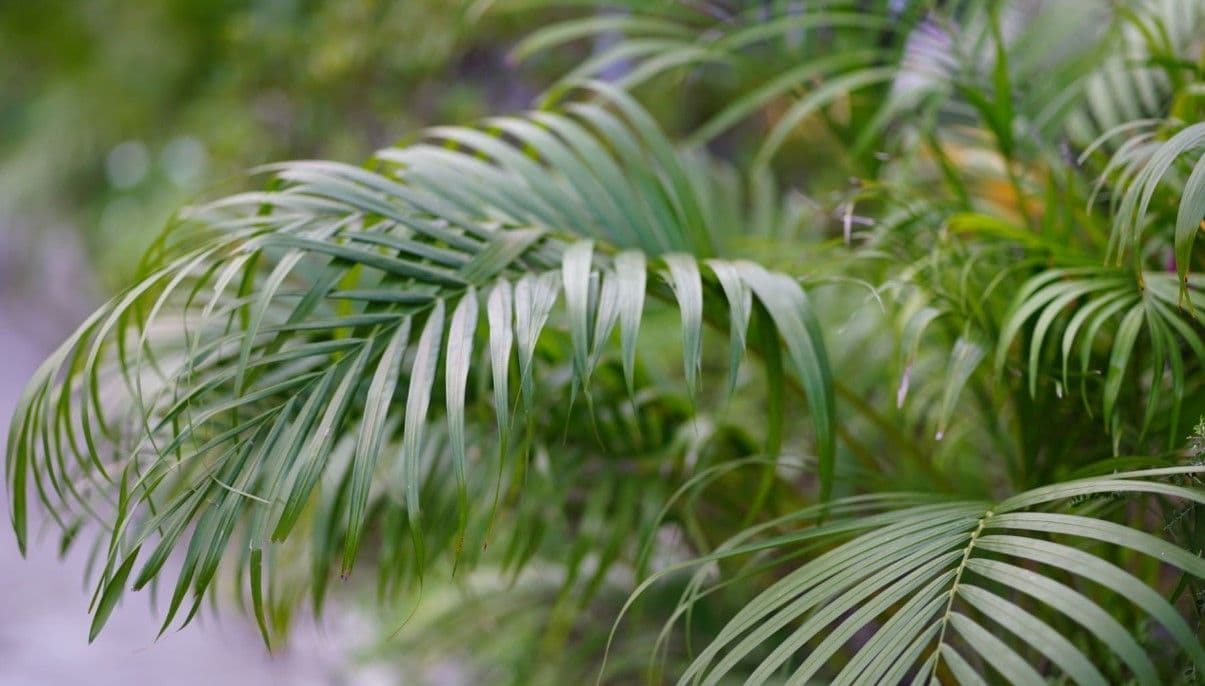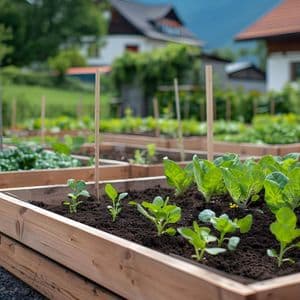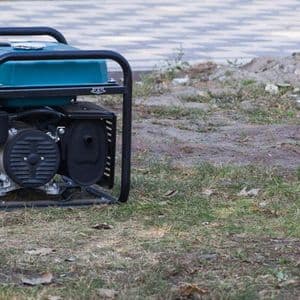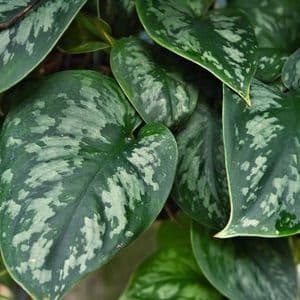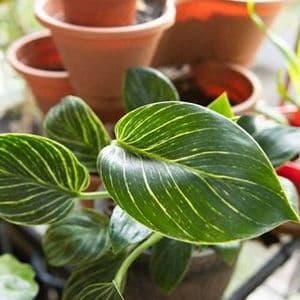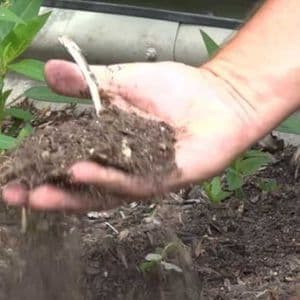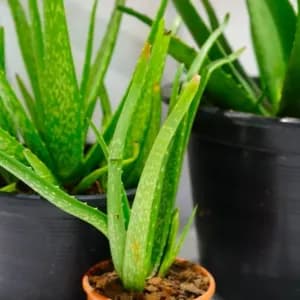It is difficult to think that the Areca Palm (Dypsis lutescens), which is native to Madagascar, is a threatened species [1]. In a warm environment in the United States, you may see dozens of these tall, beautiful, clumping palm trees that resemble bamboo driving along practically any street. These palms have smooth, sometimes golden trunks that look like bunches of bamboo. Its fronds resemble bamboo leaves because they are full and thin. They are frequently employed as a privacy screen when cultivated outside. These palms are frequently cultivated inside as houseplants. They grow slowly to moderately and are best planted in the spring.
Overview
To grow Areca Palm successfully, you'll need to provide the right growing conditions [2] and care. New York Garden will walk you through everything you need to know, from choosing the right soil to watering and fertilizing your plants.
|
Bloom Time |
Summer |
|
Plant Type |
Palm or cycad |
|
Flower Color |
Pale yellow |
|
Soil Type |
Moist, well-drained |
|
Native Area |
Madagascar |
|
Sun Exposure |
Full to partial sun |
|
Botanical Name |
Dypsis lutescens (formerly Chrysalidocarpus lutescens) |
|
Family |
Arecaceae |
|
Common Names |
Areca palm, bamboo palm, golden cane palm, yellow palm |
|
Soil pH |
Acidic, neutral |
|
Mature Size |
12-30 feet tall outdoors with a crown spread of 10-20 feet; 8 feet tall indoors |
|
Hardiness Zones |
10–11 (USDA) |
How to Grow and Care for Areca Palm
While growing plants outside, it's crucial to pick a planting location with sufficient drainage. Root rot on a palm is readily brought on by wet soil [3]. A well-draining container is necessary for growing plants inside as houseplants.
Plan to water your areca palm regularly anytime the soil begins to dry out. It's crucial to keep outside palms moisturized during hot, dry weather conditions in order to maintain their health.
Unless they are situated close to a very bright window, indoor palms frequently don't receive enough light. Hence, it might help your hand to bring it outdoors in warm weather to be exposed to diffused sunshine.
Feed palms both inside and outside all during the growth season. There is not much pruning or trimming required for these palms. Any withering fronds should be left until they are mostly brown since they can still contribute to photosynthesis.
Light
These plants can handle full sun when grown outside, although they prefer bright, filtered light. Areca palms thrive indoors with exposure to strong light from a south or west-facing window.
Soil
A well-draining, peat-based potting mix is ideal for indoor potted plants. The ideal soil for outdoor specimens is rich, somewhat acidic, and has excellent drainage. It could be essential to amend with sand and peat moss to increase soil porosity and reduce pH.
Water
Like many other palms, areca palms prefer wet soil, but they are delicate to overwatering and cannot stand to be in a potting mix that is saturated with water. Hence, in between waterings, let the soil or potting mix somewhat dry out. Use distilled water or rainwater collection instead, as areca palms are equally sensitive to fluoridated water.
Thermodynamics and Humidity
This plant grows in normal temperatures of 65 to 75 degrees Fahrenheit whether it is indoors or out. In areas where the outside temperature doesn't go below roughly 50 degrees Fahrenheit, it will thrive when planted in the garden.
Keep indoor plants away from heat sources, air conditioners, and chilly windows when growing them. Aside from that, if you keep potted plants outside in the summer, make sure to bring them inside before it gets colder than 50 degrees Fahrenheit. The leaves may get black patches as a result of sudden cold bursts.
A high humidity level is necessary to maintain an areca palm's optimum appearance. The plant will adjust to the typical indoor humidity level. Yet, it is typical for the leaf tips to become brown if the air is excessively dry.
Fertilizer
As the areca palm consumes a lot of food, treating it with a liquid fertilizer from spring to early fall is necessary. While the plant is dormant in the late fall and winter, do not feed it.
Propagating Areca Palm
Areca palm (Dypsis lutescens) is a popular houseplant that can add a tropical touch to any indoor space. It is also known as the butterfly palm, golden cane palm, or yellow palm. Areca palm can grow up to 6-10 feet tall and 3-5 feet wide, with graceful, arching fronds and yellow-green leaflets. Areca palm prefers bright, indirect light and moist, well-drained soil. It is sensitive to overwatering and underwatering, as well as to low humidity and cold temperatures.
One way to propagate areca palm is by division. This method involves separating the clumps of stems that grow from the base of the plant. To do this, you will need a sharp knife, a potting mix, and some pots. Here are the steps to follow:
-
Choose a healthy areca palm that has multiple stems growing from the base.
-
Remove the plant from its pot and gently shake off the excess soil.
-
Identify the clumps of stems that you want to separate. They should have their own roots and leaves.
-
Use a sharp knife to cut through the roots and stems, separating the clumps. Try to keep as much root as possible for each clump.
-
Pot each clump in a new pot with fresh potting mix. Make sure the pot has drainage holes and is slightly larger than the root ball.
-
Water the new plants well and place them in a bright, indirect light location.
-
Keep the soil moist but not soggy, and mist the leaves regularly to increase humidity.
-
Fertilize the new plants every two weeks with a balanced liquid fertilizer during the growing season.
How to Grow Areca Palm From Seed?
1. Obtain fresh areca palm seeds from a reputable source. You can buy them online or from a local nursery, or collect them from a mature areca palm plant. The seeds should be plump, firm, and orange-red in color. Avoid seeds that are shriveled, moldy, or dark brown.
2. Soak the seeds in lukewarm water for 24 hours to soften the outer shell and speed up germination. Change the water every few hours to prevent fungal growth.
3. Fill a seed tray or small pots with a well-draining potting mix that is rich in organic matter. You can use a commercial mix or make your own by combining equal parts of peat moss, perlite, and vermiculite.
4. Sow the seeds about 1 inch deep in the potting mix, leaving some space between them. Cover them lightly with more potting mix and water well.
5. Place the seed tray or pots in a warm and bright location, but out of direct sunlight. The ideal temperature for germination is between 80-90°F (27-32°C). You can use a heat mat or an electric blanket to maintain the temperature if needed.
6. Keep the potting mix moist but not soggy by misting or watering lightly every day or as needed. Do not overwater or let the seeds sit in water, as this can cause rotting.
7. Wait for the seeds to germinate, which can take anywhere from 2 weeks to 6 months, depending on the freshness and quality of the seeds. You will see a small green shoot emerge from the soil when the seed has sprouted.
8. Transplant the seedlings to larger pots when they have at least two pairs of leaves. Use the same potting mix as before and water well after transplanting.
9. Care for your areca palm seedlings by providing them with bright indirect light, moderate humidity, and regular watering and fertilizing. You can also prune them to maintain their shape and size.
10. Enjoy your beautiful areca palm plants and watch them grow into graceful palms that will enhance your home decor.
Potting and Repotting Areca Palms
Common Pests & Plant Diseases
Plants are often affected by various pests and diseases that can reduce their growth, yield and quality. Some of the most common pests and diseases that affect plants are:
-
Aphids: These are small, soft-bodied insects that suck the sap from plant leaves, stems and flowers. They can cause wilting, yellowing, curling and distortion of plant parts. They can also transmit viral diseases to plants.
-
Powdery Mildew: This is a fungal disease that appears as a white, powdery coating on the surface of plant leaves, stems and flowers. It can reduce photosynthesis, weaken the plant and make it susceptible to other diseases.
-
Caterpillars: These are the larvae of various moths and butterflies that feed on plant leaves, stems and flowers. They can cause defoliation, holes, skeletonization and webbing of plant parts. Some caterpillars can also produce toxins that can harm humans and animals.
-
Blight: This is a general term for various bacterial and fungal diseases that cause dark spots, lesions, rotting and wilting of plant parts. Blight can spread rapidly and kill entire plants or crops.
FAQs
How frequently do I need to water my Areca Palm?
The soil has to be regularly wet but not saturated. You might need to water once or twice a week, depending on the humidity and warmth of your surroundings. To prevent overwatering, make sure you carefully check the soil's moisture content before watering.
Does Areca Palm need direct sunlight?
Areca Palm prefers bright, indirect sunlight but can tolerate some direct sunlight in the morning or late afternoon. Too much direct sunlight can scorch the leaves, so it's important to find a spot that offers a good balance of light.
Can Areca Palm grow in low light?
While Areca Palm can tolerate some shade, it still needs a moderate amount of light to thrive. If you're placing it in a low light area, consider supplementing with artificial light.
Areca Palm is a stunning tropical plant that can add a touch of exotic beauty to any indoor space. With proper care and attention, you can easily grow and maintain a healthy Areca Palm in your home. Remember to provide adequate water, light, and fertilizer, and be sure to address any issues promptly to keep your plant thriving. With these tips, you'll be well on your way to enjoying the lush, green foliage of your Areca Palm for years to come.
The New York Garden works under restricted procurement guidelines and relies on peer-reviewed studies and studies conducted by academic organizations. Tertiary references should be avoided. For more information on how we ensure our material is correct and up to date, please visit our editorial policy.
-
Threatened species - University of Florida
-
Growing conditions - Yard and Garden Extension
-
Root rot on a palm is readily brought on by wet soil - Clemson University Cooperative Extension Service.

